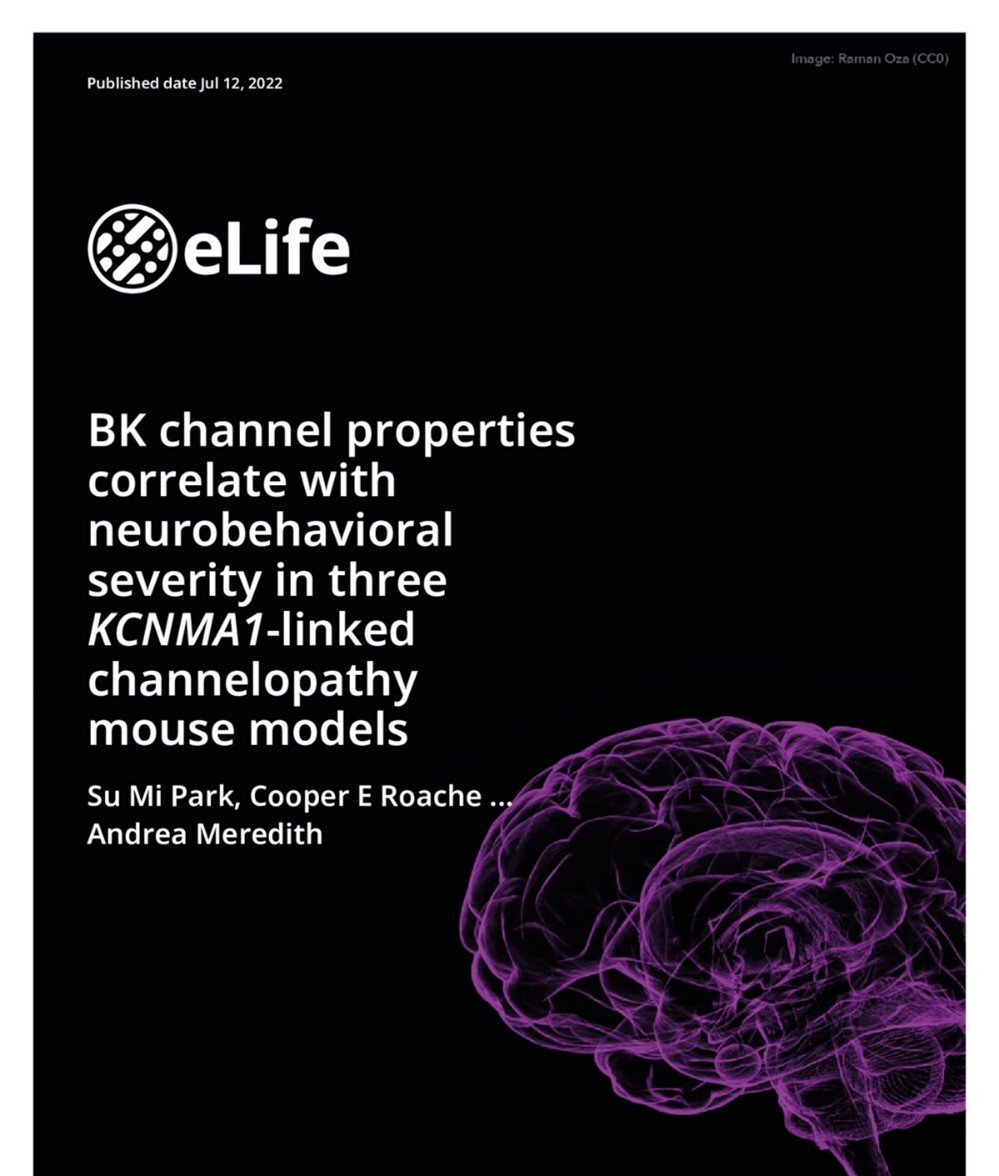An exciting new KCNMA1 research study has been published. Here’s a direct link to the full paper.
The most basic summary is that mice with human KCNMA1 mutations have some symptoms which resemble those seen in some people with the same or similar mutations, primarily “dyskinesias”. The term dyskinesia is essentially a synonym for a loss of voluntary muscle control.
Importantly, the dyskinesias in mice improved with a medication called dextroamphetamine. Dextroamphetamine is already known to treat dyskinesias seen in some people with KCNMA1 mutations. But the fact that the dyskinesias in mice also respond to this medication is very good evidence that these mice have the “same” disorder that humans do. And this now allows researchers to continue to use these mice as a good “mouse model” of human KCNMA1 disorders and, for example, to figure out additional treatment options, and learn more about KCNMA1 disorders in general.
Below is additional information about the new study and its relevance and importance.
How does scientific research help us understand rare gene-linked diseases?
Genetic testing is increasingly used to identify genes and specific DNA variations within genes that are found in patients with rare disease. Yet the scarcity of inherited syndromes and patients in rare disease, in combination with symptomatic differences and additional genomic alterations, hamper the ability to show that certain DNA variants cause particular disorders. A new and comparatively undefined ultra-rare neurological disorder is associated with variants in the KCNMA1 gene. There are less than 70 documented individuals and few cases of familial transmission. The KCNMA1 gene encodes a K+ ion channel, a class of membrane protein important for regulating brain activity. Patients primarily present with seizure and/or debilitating paroxysmal dyskinesia, an uncommon type of movement disorder that causes hundreds of ‘drop attacks’ per day. The basis for these drop attacks is not known.
What research question does this study set out to answer, and why is it important?
The study attempts to determine whether three KCNMA1 variants cause the major symptoms of this new disorder by introducing them into mice using CRISPR gene-editing. Three transgenic mouse models associated with seizures and drop attacks were made. Their ability to change normal functions was defined at the channel, neuron, and neurobehavioral levels. Comparing these functional differences between the variants identified those with the strongest potential to cause the disease symptomology, like symptoms observed in patients, and begins to define the underlying channel and neuronal basis.
What are the most important findings of the study?
The lab of Dr. Andrea Meredith developed a new test for the ‘drop attack’ dyskinesia. In this test, mice with dyskinesia become temporarily frozen. Mice that have a lot of freezing episodes can also be triggered to have seizures more quickly. These neurobehavioral abnormalities are associated with ‘gain-of-function’ effects, increasing channel and neuron activity for two variants tested in the study. The strongest gain-of-function variant produced a clinically-accurate model for paroxysmal dyskinesia that could be rescued with dextroamphetamine, a treatment used in KCNMA1 channelopathy patients for their drop attacks. In contrast, a different, loss-of-function variant decreased channel activity and lacked changes in neuronal activity or freezing. These transgenic mice could help understand why some KCNMA1 channelopathy patients have drop attacks and seizures and some don’t.
Who could benefit from the findings of this study?
These new gene variant and disease correlations will help scientists studying this disorder understand what causes KCNMA1 channelopathy and paroxysmal dyskinesia. Both of these are exceedingly rare disorders with a very limited set of mechanistic models and treatment options.
References
Park SM, Roache CE, Iffland PH, Moldenhauer HJ, Matychak KK, Plante AE, Lieberman AG, Crino PB, and Meredith AL (2022). BK channel properties correlate with neurobehavioral severity in three KCNMA1-linked channelopathy mouse models. eLife 2022;11:e77953.
Keros S, Heim J, Hakami W, Zohar-Dayan E, Ben-Zeev B, Grinspan Z, Kruer MC, Meredith AL (2021). Lisdexamfetamine therapy in paroxysmal non-kinesigenic dyskinesia associated with the KCNMA1-N999S variant. Movement Disorders Clinical Practice 9(2): 229–235.
